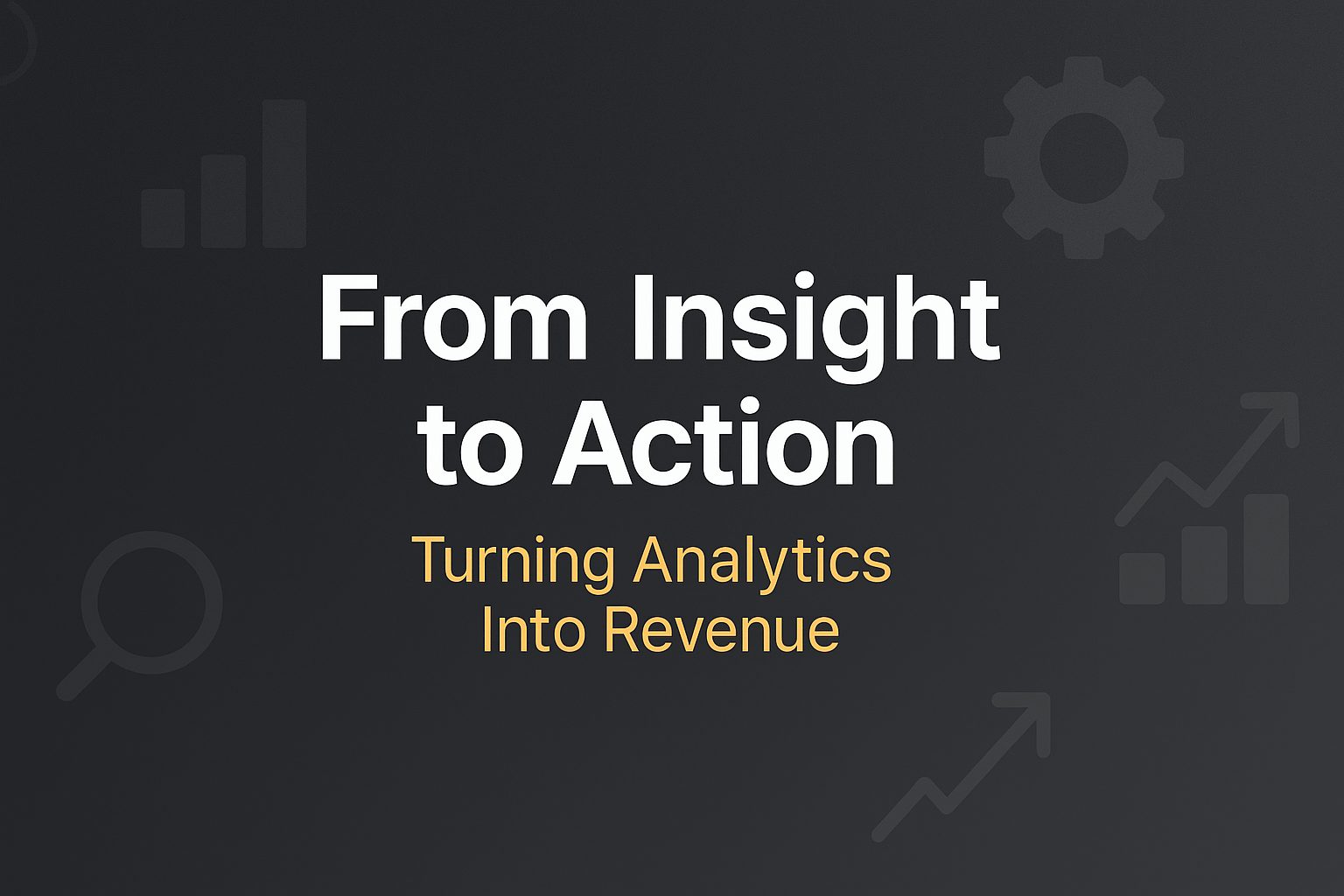Most SMEs already track their numbers. Dashboards flash traffic, conversions, and ROAS each week. But here’s the catch: insight without action adds nothing to the bottom line.
The difference between businesses that grow and those that stall isn’t the amount of data. It’s the ability to translate analytics into decisions that drive revenue.
This post shows how to bridge that gap — and turn analytics from a reporting chore into a growth engine.
The Insight Trap
What most SMEs do
They collect data religiously, producing reports that tell them what happened. Meetings are filled with graphs, yet no clear actions follow.
What effective SMEs do
They move past description and into decision. Analytics becomes a framework for trade offs: which products to push, which campaigns to cut, and where to invest.
Reporting is history. Action is revenue.
Related reading: Why Most eCommerce Dashboards Are Lying to You.
Step 1: Link Analytics to P&L
Analytics must connect directly to financial outcomes. Instead of tracking “site traffic,” ask:
- Which channel delivers profitable customers?
- Which cohort produces the highest LTV?
- Which discount campaigns erode margin?
When metrics are tied to contribution margin and lifetime value, decisions naturally become commercial.
Step 2: Build Weekly Trading Rituals
Dashboards aren’t for pretty slides — they’re for action. High performing SMEs embed data into their weekly rhythm.
- Input metrics: traffic quality, funnel drop offs, repeat purchase rate.
- Discussion: which numbers moved and why.
- Decision: what gets scaled, paused, or tested.
- Owner + deadline: clarity on who acts and by when.
Without rituals, data sits idle. With them, analytics powers revenue.
Step 3: Test What the Numbers Reveal
Analytics shows patterns. Revenue comes from acting on them. For example:
- High basket abandonment? Test checkout simplification or payment options.
- Drop in repeat rate? Run lifecycle emails targeting churn risk.
- High performing product? Feature it in campaigns and upsells.
The test itself is where insight converts to cash.
Step 4: Explore New Revenue Streams
Analytics can point to growth beyond optimisation:
- Bundling opportunities: Which SKUs are most often bought together?
- Premium tiers: Which customer segments pay more with minimal churn?
- Partnership insights: Which aggregated trends could inform suppliers or partners?
Data doesn’t just support sales — it can create entirely new ones.
As Acceldata notes in its data monetisation insights, businesses that treat analytics as a revenue driver — not just a reporting tool — gain innovation and a sustained competitive edge.
Common Pitfalls
- Vanity metrics: Focusing on likes, impressions, or broad traffic without profitability.
- Over automation: Reports without human judgement rarely lead to smart action.
- No accountability: If insights aren’t assigned to owners, they never become outcomes.
FAQ
- Isn’t analytics just about reporting?
- No. Reporting describes the past; analytics guides what to do next.
- Do SMEs need enterprise BI platforms to act on analytics?
- Not at all. Simple setups like GA4 + Excel can power strong decisions if tied to P&L.
- How quickly can analytics-driven actions pay off?
- Often within weeks. CRO tests, lifecycle emails, or pricing tweaks can deliver immediate uplift.
- What’s the hardest part?
- Changing culture. Shifting from “reporting” to “deciding” requires leadership buy-in.
Conclusion
SMEs don’t lack data — they lack frameworks to act on it. By tying analytics to P&L, embedding weekly rituals, and testing based on patterns, insight turns into outcomes and dashboards into revenue streams.
Want help turning numbers into growth? Book a discovery call and see how Mostly Grey Digital makes analytics actionable.
Key Takeaways
- Insight without action adds no value.
- Link analytics to P&L for commercial clarity.
- Weekly trading rituals keep data alive.
- Tests transform patterns into revenue.
- Analytics can spark new business models, not just optimise existing ones.
